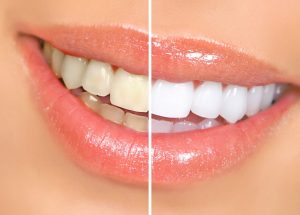Many of us suffer from crooked teeth, which can at best make our smile seem less attractive and at worst, cause pain, discomfort or difficulties with eating, talking or sleeping. There is no need to put up with crooked teeth, however, as several treatment options exist in the world of cosmetic dentistry that can straighten the teeth, close the gaps and produce a smile to be proud of.
One such treatment is dental bonding. Commonly used to disguise chipped, discoloured and misshapen teeth, dental bonding can be used to effectively treat crooked teeth as well. It is a straightforward procedure involving the application of a layer of tooth-coloured resin directly onto the surface of the affected teeth. The resin is designed to match your existing teeth in colour as closely as possible. Once mixed, it is ‘cured’ and bonded to the surface by a specialsed light that hardens the resin and fixes it into its final shape.
Bonding is Minimally invasive
Dental bonding is also known as tooth bonding and is quick, painless and relatively inexpensive to obtain. It is considered minimally invasive dentistry, as the composite bonding material adheres externally to the tooth and there is no need for the dentist to drill into or remove anything beyond a small amount of enamel in order to roughen the surface and enable the bonding material to adhere. This initial stage can cause some sensitivity in the area for some people, but nervous patients can have the area numbed first to remove this concern and help them remain calm and relaxed throughout the process.
Dental bonding can only be applied to healthy teeth without any decay. The composite bonding layer will add stability and strength, correcting minor flaws and protecting the whole tooth. It can last for several years, provided good oral hygiene is maintained. It normally requires just one visit to the dentist for the resin to be applied with little to no discomfort expected afterwards. Dental bonding for crooked teeth can also be repaired or replaced if cracks or chips do appear from any sudden impacts or mistreatment of the bonding after it has been applied.
While more serious cosmetic flaws might be better served with porcelain veneers, crowns, or more intense realignment solutions such as braces, bonding with a dental composite is an excellent way to treat less pressing issues, including discolouration, hairline fractures, smaller gaps and crooked teeth. One option could be to have dental bonding applied as a temporary or medium-term measure while you save up for, or look into other cosmetic dentistry methods like veneers, braces or crowns.
Composite resin aesthetic advantages
Composite bonding can make shorter teeth look longer, thus adding 
Finally, tooth bonding can be applied to any teeth, front or back; top or bottom as a preventative measure. This can be a wise move for any teeth that you know to be weakened or at extra risk of decay from food particles getting trapped in between crooked or misaligned edges. A layer of composite bonding will strengthen the surface, smooth over the harder-to-brush areas and restore your self-confidence and smile, allowing you to concentrate on taking care of your oral and dental hygiene.
Life after dental bonding
Once the dental bonding has been applied, you can brush and floss your teeth and use mouthwash as normal. Your mouth may feel strange at first as you get used to the feel of the resin, the additional layer of ‘tooth’ and the smoothing out of any crooked areas that your tongue has grown used to exploring. Teeth may feel wide and cumbersome at first and you may find eating and talk a bit strange. However, the vast majority of people who opt for composite resin dental bonding quickly get used to the sensation and everything settles down to become second nature.
Bonded teeth won’t respond to whitening treatments in the same way as those left natural, so do bear this in mind if you are keen to whiten or straighten the rest of your teeth. You will also have to consult with your dentist and/or orthodontist if you want to have any further cosmetic work done, including any more serious realignment or reshaping.
Composite Bonding Services
Find out how Cheadle Village Dental Practice can help you achieve the smile that you deserve. Get in contact with us today!



